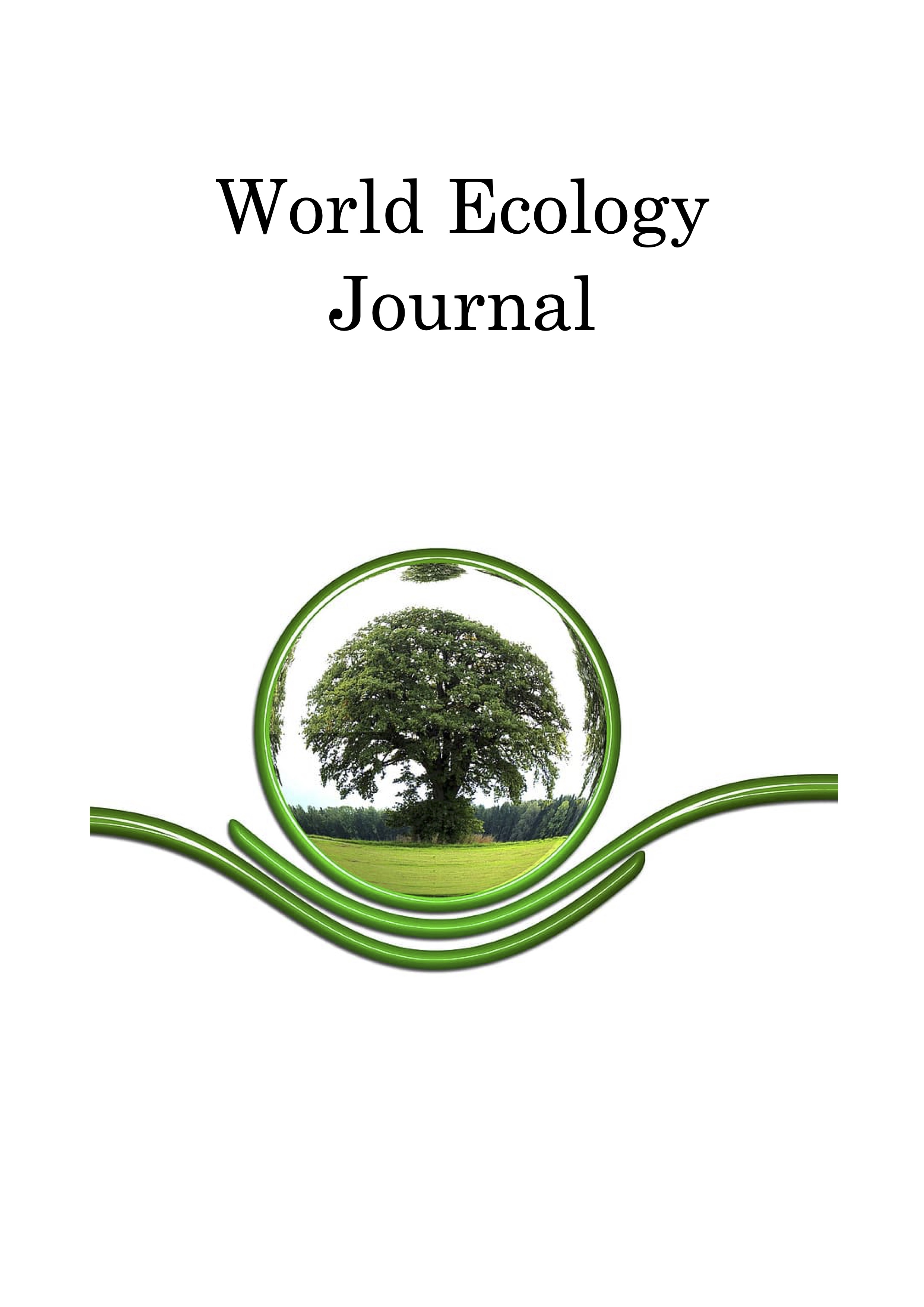Эколого-биологическая оценка вьющихся кустарников для вертикального озеленения территорий
DOI:
https://doi.org/10.25726/worldjournals.pro/WEJ.2020.2.5Ключевые слова:
вьющиеся кустарники, вертикальное озеленение, жилые районы, биологическое разнообразие, дендроколлекции, адаптация, коллекции Федерального научного центра агроэкологии, комплексной мелиорации и защитного лесоразведения Российской академии наукАннотация
Вьющихся кустарников имеют важное эстетическое и санитарно-гигиеническое значение как виды многоцелевого использования при развитии городских и агроэкосистем в засушливых районах (Волгоградская область). Объекты исследования – 5 видов вьющихся кустарников (Campsis radicans; Vitis amurensis; Parthenocissus quinguefolia; Celastrus orbiculata; Lonicera Caprifolium) в коллекциях Федерального научного центра агроэкологии Российской академии наук.
Выявлено, что устойчивы к переносу комплекса зимних факторов североамериканские, европейские и дальневосточные виды (Vitis amurensis, Parthenocissus quinguefolia, Celastrus orbiculata), естественный ареал которых расположен в тех же географических широтах, что и Нижнее Поволжье. Ареал кавказско-средиземноморских и восточноазиатских видов значительно южнее. Campsis radicans и Lonicera caprifolium рекомендуются для южных районов Волгоградской области.
Установлено, что с повышением температуры и падением влажности воздуха и почвы к концу вегетации наибольший дефицит наблюдается у Vitis amurensis - 22%. Celastrus orbiculata rotundifolia – 18%, Campsis radicans – 14%, Parthenocissus quinguefolia - 12%. Низкий дефицит воды у Lonicera Caprifolium (около 10%). Исследования показали, что вертикальное озеленение с использованием вьющихся кустарников улучшает микроклимат в жаркие летние месяцы.
Библиографические ссылки
2. Baumgartner, A., Donahoo, M., Chitwood, D. H., & Peppe, D. J. (2020). The influences of environmental change and development on leaf shape in Vitis. American Journal of Botany, 107(4), 676–688. https://doi.org/10.1002/ajb2.1460
3. Jachuła, J., Denisow, B., & Strzałkowska-Abramek, M. (2019). Floral reward and insect visitors in six ornamental Lonicera species – Plants suitable for urban bee-friendly gardens. Urban Forestry and Urban Greening, 44. https://doi.org/10.1016/j.ufug.2019.126390
4. Jeberean, M. G., Bala, M., Berar, C., Tota, C. E., & Silivasan, M. (2018). Results regarding the effect of cutting length on the rooting percentage with campsis radicans. In International Multidisciplinary Scientific GeoConference Surveying Geology and Mining Ecology Management, SGEM (Vol. 18, pp. 549–556).
5. Jiang-bao, X., Shu-Yong, Z., Guang-Can, Z., Wen-Jun, X., & Zhao-Hua, L. (2011). Critical responses of photosynthetic efficiency in Campsis radicans (L.) Seem to soil water and light intensities. African Journal of Biotechnology, 10(77), 17748–17754. https://doi.org/10.5897/AJB11.2208
6. Larionov, M. V, Larionov, N. V, Siraeva, I. S., & Ermolenko, A. S. (2018). The Composition and Characteristics of the Dendroflora in the Transformed Conditions of the Middle Reaches of the River Khoper. In IOP Conference Series: Earth and Environmental Science (Vol. 115). https://doi.org/10.1088/1755-1315/115/1/012009
7. Liu, H. (2013). The application of lianas to uban vertical planting- A case study of Haizhu district of Guangzhou city, China. Advanced Materials Research, 807–809, 1852–1855. https://doi.org/10.4028/www.scientific.net/AMR.807-809.1852
8. Melikhov, V. V, Novikov, A. A., Medvedeva, L. N., & Komarova, O. P. (2017). Green technologies: The basis for integration and clustering of subjects at the regional level of economy. Contributions to Economics, (9783319454610), 365–382. https://doi.org/10.1007/978-3-319-45462-7_37
9. Novikova, L. Y., & Naumova, L. G. (2019). Structuring ampelographic collections by phenotypic characteristics and comparing the reaction of grape varieties to climate change. Vavilovskii Zhurnal Genetiki i Selektsii, 23(6), 772–779. https://doi.org/10.18699/VJ19.551
10. Peng, Z.-H., & Zhang, X.-D. (2004). Discussion on important role of trees in urban forest. Forest Research, 17(5), 666–673.
11. Potienko, N., Kuznetsova, A., & Soya, D. (2020). Green energy technologies of tall buildings for air pollution abatement in metropolises. Advances in Intelligent Systems and Computing, 982, 105–115. https://doi.org/10.1007/978-3-030-19756-8_11
12. Safikhani, T., Abdullah, A. M., Ossen, D. R., & Baharvand, M. (2014). Thermal impacts of vertical greenery systems. Environmental and Climate Technologies, 14(1), 5–11. https://doi.org/10.1515/rtuect-2014-0007
13. Semenyutina, A. V, Podkovyrov, I. Y., Huzhahmetova, A. S., Semenyutina, V. A., & Podkovyrova, G. V. (2016). Mathematical justification of the selection of woody plants biodiversity in the reconstruction of objects of gardening. International Journal of Pure and Applied Mathematics, 110(2), 361–368. https://doi.org/10.12732/ijpam.v110i2.10
14. Semenyutina, A. V, Semenyutina, V. A., Khuzhakhmetova, A. S., & Svintsov, I. P. (2019). The decrease in the concentration of formaldehyde in the environment of aluminosilicate sorbents. Key Engineering Materials, 802, 57–68. https://doi.org/10.4028/www.scientific.net/KEM.802.57
15. Semenyutina, A., Podkovyrova, G., Khuzhakhmetova, A., Svintsov, I., Semenyutina, V., & Podkovyrov, I. (2018). Engineering implementation of landscaping of low-forest regions. International Journal of Mechanical Engineering and Technology, 9(10), 1415–1422.
16. Shchepeleva, A. S., Vasenev, V. I., Mazirov, I. M., Vasenev, I. I., Prokhorov, I. S., & Gosse, D. D. (2017). Changes of soil organic carbon stocks and CO2 emissions at the early stages of urban turf grasses’ development. Urban Ecosystems, 20(2), 309–321. https://doi.org/10.1007/s11252-016-0594-5
17. Wong, N. H., Kwang Tan, A. Y., Chen, Y., Sekar, K., Tan, P. Y., Chan, D., … Wong, N. C. (2010). Thermal evaluation of vertical greenery systems for building walls. Building and Environment, 45(3), 663–672. https://doi.org/10.1016/j.buildenv.2009.08.005
18. Xing, X.-Y., Hao, P.-Y., & Dong, L. (2019). Color characteristics of Beijing’s regional woody vegetation based on Natural Color System. Color Research and Application, 44(4), 595–612. https://doi.org/10.1002/col.22375
Дополнительные файлы
Опубликован
Как цитировать
Выпуск
Раздел
Лицензия
Copyright (c) 2020 Aliya Khuzhakhmetova, Sergei Lazarev, Victoria Semenyutina

Это произведение доступно по лицензии Creative Commons «Attribution-NonCommercial-NoDerivatives» («Атрибуция — Некоммерческое использование — Без производных произведений») 4.0 Всемирная.




